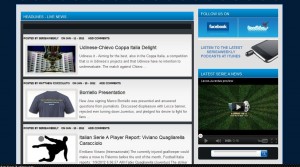Optimal Performance Training: Deceleration And Eccentric Strength Part I
When talking to players and coaches about their training they all tell me the same thing, “I want to work on speed so I can be quicker on the field”. Their focus is on speed training but with no real understanding on what type of speed training they should do. Most of their training involves sprinting distances in a straight line. Soccer involves movement in many different directions. Players are required to sprint, stop, change direction and make a play on the ball all within a 5 – 10 yard radius. Speed does not come from running fast in straight lines, but comes from being able to transition in and out of multidirectional movements efficiently and safely. To improve this transition one must work on deceleration.
What is Deceleration?
Deceleration can be defined as the ability to decrease velocity. It is a crucial skill that is required in every sport. It is a concept that is so vital to soccer yet it is rarely addressed or trained. Deceleration is just as important as acceleration; maybe even more so because of the role it plays in stopping, cutting, change in direction, and transitioning from one movement or play to another. This is all performed while trying to maintain posture (athletic stance), balance, and control while producing skillful athletic movements.
Why train Deceleration?
Training deceleration is an important concept when training for high performance. What really separates the fast athletes from the rest is how quickly they can decelerate. Being able to decelerate and change directions quickly is the illusion of speed and can be the difference maker in a game. It occurs when creating space on the field, winning 1 on 1 battles, and even when striking a ball (plant leg).
An area of concern that has led to an increase in deceleration training is that of injury prevention. Many are too concerned with teaching their athletes how to speed up but place no emphasis on teaching them how to slow down. Many injuries occur from stop/start movements, and are a key contributor to Anterior Cruciate Ligament (ACL) injuries. By keeping athletes injury free, they can spend more time on the field learning their soccer specific skills then on the sidelines rehabbing from injury.
How do you train Deceleration?
Momentum is key to deceleration. As speed increases, so too does momentum. This means that it will place more demand on the body as more force will be required to control, decelerate or stop it. Eccentric strength, dynamic balance and reactive movement are qualities that have a significant influence on the athlete’s ability to decelerate. All 3 aspects should be addressed when developing training programs for young athletes. In this segment, we will focus our attention on eccentric strength.
Eccentric Strength
Eccentric strength can be described as training muscles during the lengthening phase of the muscle action. During eccentric loading, the muscle is under tension while lengthening. Eccentric muscle contractions require more muscle fiber recruitment, and it is a known fact that athletes can support more weight eccentrically (lengthening) than concentrically (shortening). When training eccentric strength, it isn’t just the muscles we are training but movement patterns as well. Most athletes can contract all the muscles in the leg with relative ease. When asked to perform an exercise that encompass all the muscles contracting together to perform a specific movement, athletes tend to struggle with this, and this is what leads to injury. As important as it is to train muscles, we need to teach proper movement patterns above all else. Teaching athletes to use their glutes and hamstrings and not be so reliant on their quads will improve performance and reduce the risk of injury. Therefore it is important that eccentric focused strength training be incorporated into an athlete’s training program to maximize athletic improvement.
Here are some exercises to focus on that will train eccentric strength for deceleration. They can be performed in a gym, at home or on the field.
Strength Exercises
1. Squats with Miniband
Start with band around your knees. Stand in your athletic stance with feet pointing straight ahead. Maintaining your athletic stance, start the movement with your hips. As the hips go back and down the arms come up. Go down until parallel to the floor, hold for 3 seconds, then return to the starting position. Keep your knees pushing out against the band; do not let your knees collapse inward during the movement.
Perform 3 sets for 8-10 reps
2. Split Squat Rear Foot Elevated
Stand in a split stance with your back foot (laces) on a bench. Lower your hips down by bending the front knee. It is important that you keep your foot flat on the floor and that your knee does not pass your toes. Keep your knee from collapsing inward throughout the movement. Work on opposite arm/leg coordination.
Perform 2 sets for 6-8 reps
3. Walking Lunge
Step forward and drop into your lunge. Extend the leg returning to the start position. Keep your front foot flat on the floor and do not let your knee pass your toes. Keep your head/chest up and your knee from collapsing inward throughout the movement. Work on opposite arm/leg coordination.
Perform 2 set for 6-8 reps
Stay tuned for part II of Deceleration this coming week with more strength training videos and exercises that will enhance your performance on game day.


 Send us a timely, compelling post and we'll consider it for publishing on the site with mention of your name and social-media link.
Send us a timely, compelling post and we'll consider it for publishing on the site with mention of your name and social-media link.




